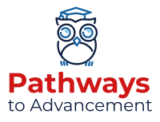The term “skills gap” refers to the disconnect between the skills employers need and the skills job seekers currently possess. This mismatch can hinder career growth, limit job opportunities, and create challenges for both individuals and organizations. In today’s competitive job market, bridging this gap is essential for anyone aiming to advance their career or secure their desired job role.
With rapid technological advancements, changing industry demands, and evolving job roles, the need for ongoing skill development has never been more critical. According to a report by the World Economic Forum, 50% of all employees will need reskilling by 2025 as the adoption of technology increases. Closing skills gaps not only boosts employability but also positions professionals to take advantage of new opportunities in a constantly shifting job landscape.
Current State of the Skills Gap in the United States
The current skills gap in the United States is significant and continues to widen. Recent surveys indicate that 70% of business leaders report a lack of the necessary skills within their workforce, with many emphasizing the demand for both technical and business-critical skills. The primary technical skills in short supply include data analysis and artificial intelligence (AI) capabilities, while business leaders are struggling to find employees proficient in strategic thinking, problem-solving, and decision-making. In fact, nearly 40% of leaders have seen this skills gap worsen over the past year, particularly as technology evolves and reshapes the workplace environment.
Additionally, there is a strong demand for soft skills, including adaptability, communication, and teamwork. These are essential in navigating hybrid work environments and collaborating across different functions. According to another source, 57% of leaders expressed a need for stronger strategic and critical thinking abilities among employees, and 46% highlighted a shortage of effective communication skills.
These trends illustrate the growing challenges for businesses to find and develop talent that can thrive in an increasingly complex and technology-driven landscape. Addressing this gap requires a concerted effort in upskilling and reskilling the workforce to meet the demands of the future.
What is the Skills Gap?
A skills gap is the difference between the competencies you have and those required by your desired career path. For example, a marketing professional transitioning to a digital marketing role might have a gap in SEO, data analytics, or social media advertising skills. Identifying this gap is the first step toward filling it.
Common Reasons for Skills Gaps
- Technological Changes: As technology evolves, so do the skills needed to operate new tools and platforms. Professionals who don’t keep up with these changes may find themselves with outdated knowledge.
- Industry-Specific Demands: Certain sectors, like healthcare and finance, have specific skill requirements that change as new regulations and best practices emerge.
- Lack of Continued Education or Professional Development: Without investing in ongoing education, it’s easy to fall behind.
- Transitioning to a New Career: People switching industries often experience a significant skills gap since the new field requires different technical or soft skills.
Signs You Might Have a Skills Gap
- Difficulty Getting Interviews or Job Offers: If you’re struggling to land interviews despite a strong resume, there could be a misalignment between your skills and what employers need.
- Lack of Upward Mobility in Your Current Role: Hitting a plateau in your career often indicates that new skills are needed to move forward.
- Frequent Skill-Based Feedback: If managers or colleagues frequently mention skill-related gaps in performance reviews, this is a strong indicator of a need for development.
Examples of Skills Gaps in the Workplace
A skills gap occurs when there’s a disparity between the skills employers need and the skills that employees or job seekers currently possess. These gaps can hinder productivity, innovation, and career growth. Below are some common examples of skills gaps in the workplace:
- Digital and Technology Skills
- The rapid advancement of technology has created a demand for digital proficiency in areas such as data analytics, cybersecurity, cloud computing, and artificial intelligence.
- Many employees struggle to keep up with these changing tools and platforms, creating a gap in tech-savvy talent.
- Project Management Skills
- Effective project management involves skills such as planning, risk management, budgeting, and stakeholder communication.
- A lack of these skills can lead to projects running over budget, missed deadlines, and decreased team collaboration.
- Leadership and Management Skills
- Companies often experience a shortage of individuals with strong leadership capabilities, including decision-making, strategic thinking, and team management.
- This gap can hinder organizational growth, as there is a lack of leaders who can guide teams through change and drive innovation.
- Communication Skills
- Poor communication—both written and verbal—can lead to misunderstandings, lower productivity, and ineffective teamwork.
- As more workplaces embrace remote or hybrid models, clear and effective communication has become a critical but often underdeveloped skill.
- Soft Skills (e.g., Adaptability, Problem-Solving, Emotional Intelligence)
- While technical skills are vital, soft skills such as adaptability, problem-solving, and emotional intelligence are increasingly sought after.
- A lack of these skills can affect teamwork, conflict resolution, and the ability to navigate complex work environments.
- Sales and Customer Service Skills
- Skills like relationship building, negotiation, and active listening are crucial for customer-facing roles.
- Companies often struggle to find employees who can engage customers effectively and provide exceptional service.
- Data Literacy
- As data becomes a cornerstone of decision-making, data literacy skills (the ability to read, interpret, and use data) are critical.
- Many professionals lack the ability to understand data insights, making it challenging to leverage data for strategic decisions.
- Marketing and Digital Marketing Skills
- With the rise of digital platforms, traditional marketing skills need to be supplemented with knowledge of SEO, content marketing, and social media strategies.
- Companies often face difficulty finding professionals with an integrated approach to modern marketing techniques.
Addressing these gaps requires a strategic approach, including upskilling current employees, offering targeted training, and attracting new talent with the skills necessary. Identifying and bridging these gaps can lead to increased productivity, better employee engagement, and overall career success.
How to Identify Your Skills Gaps
Conduct a Self-Assessment
Start by reflecting on your existing skills, strengths, and weaknesses. Identify the core skills in your field and evaluate your proficiency in each. Tools like SWOT analysis (Strengths, Weaknesses, Opportunities, and Threats) or career quizzes can be helpful in pinpointing where you stand.
Compare Your Skills to Job Requirements
Analyze job postings in your target industry. Look for common competencies, keywords, and qualifications that appear frequently. Create a list of the skills required and compare it to what you currently possess. This comparison will highlight gaps that need attention.
Seek Feedback from Mentors or Supervisors
Discuss your career goals and current skill set with trusted colleagues, mentors, or supervisors. Ask for specific feedback on areas where you can improve. Getting an outside perspective can help you spot gaps you may not see yourself.
Use Skills Assessment Tools and Resources
Leverage online resources and platforms to assess your competencies:
- LinkedIn Skill Assessments: Test your skills and add verified results to your profile.
- Coursera and Udacity: Offer skills assessments and personalized course recommendations.
- MySkillsFuture: Provides insights into in-demand skills and areas for improvement based on your career goals.
Creating a Plan to Close Your Skills Gaps
Prioritize Which Skills to Develop
Identify the skills that will have the greatest impact on your career progression. Focus on:
- High-Demand Skills: Skills that are frequently mentioned in job postings.
- Transferrable Skills: Abilities that are valuable across multiple roles and industries.
- Foundational Skills: Core competencies that serve as a base for advanced skill-building.
Set SMART Goals for Skill Development
Use the SMART framework to set specific, measurable, achievable, relevant, and time-bound goals. For example, instead of saying, “I want to learn Excel,” set a goal like, “I will complete an intermediate Excel course within 3 months and apply it to my current project.”
Explore Different Learning Methods
- Formal Education: Enroll in degree programs or professional certifications that align with your target role.
- Online Learning Platforms: Platforms like Coursera, Udemy, and LinkedIn Learning offer affordable courses in virtually every field.
- Certifications: Earning certifications in your industry can validate your new skills and boost your credibility.
- On-the-Job Learning: Volunteer for projects, job shadowing, or cross-training within your organization.
- Networking and Mentorship: Join industry groups, attend webinars, and seek mentorship to gain insights and guidance.
Create a Timeline and Track Your Progress
Develop a timeline outlining when you will acquire each skill. Track your progress using tools like Trello or a simple Excel sheet to monitor completed courses, certifications, and projects that demonstrate your new abilities.
Applying New Skills to Advance Your Career
Update Your Resume and LinkedIn Profile
Once you’ve acquired new skills, update your resume and LinkedIn profile to reflect them. Use specific examples and metrics to show the impact of these skills. For instance, “Implemented data analysis techniques to improve campaign ROI by 20%.”
Showcase Your Skills in the Workplace
Look for opportunities to apply your skills in your current job. Offer to take on new projects, lead training sessions, or present new ideas that leverage your enhanced skill set.
Leverage Your Skills for Career Advancement
Use your new competencies as leverage for salary negotiations, promotions, or transitioning to new roles. Highlight how these skills add value to the organization and align with your career aspirations.
Overcoming Challenges in Bridging the Skills Gap
Finding Time for Skill Development
Balancing work, life, and learning can be difficult. Consider:
- Microlearning: Break down learning into small, manageable segments.
- Flexible Learning Options: Opt for self-paced courses that fit into your schedule.
- Setting Boundaries: Allocate dedicated time each week for learning.
Overcoming Financial Barriers
If cost is a concern, explore:
- Free or Low-Cost Learning Resources: Platforms like edX, Coursera, and Khan Academy offer free courses.
- Employer-Sponsored Training: Many companies offer funding for professional development.
- Scholarships and Grants: Look for scholarships or grants specific to your field.
Staying Motivated and Consistent
- Accountability Partners: Share your goals with a friend or mentor who can keep you on track.
- Join Professional Groups: Being part of a community can help maintain your enthusiasm.
- Celebrate Small Wins: Acknowledge milestones and celebrate your progress to stay motivated.
The Long-Term Benefits of Closing Your Skills Gaps
- Enhanced Employability and Job Security: Keeping your skills current makes you more attractive to employers and reduces the risk of becoming obsolete in your field.
- Better Career Mobility and Growth: Developing new skills allows you to pivot into different roles, industries, or even leadership positions with greater ease.
- Increased Confidence and Job Satisfaction: Closing skills gaps enhances your self-confidence and job satisfaction, as you feel more competent and capable in your role.
Takeaways
Bridging your skills gap is a proactive approach to career success. By identifying gaps, setting goals, and developing a structured learning plan, you can position yourself for long-term growth and job satisfaction.



